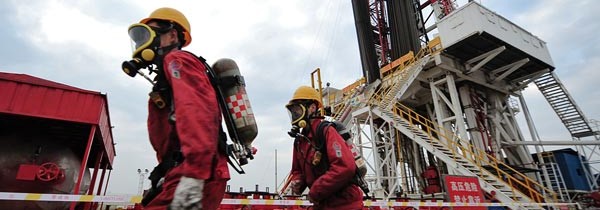10 Steps to Safe Development of Shale Gas
The shale-gas revolution is bringing a host of benefits to the U.S., including greater energy independence, reduced carbon emissions, and a resurgence of the country’s energy intensive sectors—especially petrochemicals. So far, however, relatively few other countries have taken the shale gas plunge—but that seems poised to change. As more countries take advantage of the substantial shale reserves they possess within their own borders, they will face a number of challenges. Here are ten actions policy makers in various countries can take to move ahead with a comprehensive plan for the safe and successful development of shale gas:
1. Institute a realistic licensing system. Shale-gas exploitation is quite different from the development of conventional oil and gas—and licensing policies should reflect those differences.
2. Authorize hydraulic fracturing for the exploration stage. It is the only reservoir-stimulation technique that will enable economical commercial development of shale plays.
3. Monitor hydraulic fracturing carefully. Although it is a well-tested method of extracting hydrocarbons, it is not without risk. A solid monitoring framework must be built on regulation and expertise.
4. Set up a well-resourced system for granting permits. Policy makers have to design transparent permitting systems that will prevent higher costs and frustration all around.
5. Establish a simple, stable fiscal framework that encourages exploration. If governments do this early on, operators and regulators can easily forecast the impact on expenditures and revenues.
6. Encourage the use of top-tier oil-field-services companies by operators. For activities such as geological and geophysical studies, drilling of wells, and management of hydraulic fracturing, local players will probably not have enough shale-gas experience.
7. Promote the acquisition and sharing of data. In this traditionally secretive industry, this is a crucial way to address the current lack of relevant geographical, geophysical, and environmental data available.
8. Plan for the logistics. Operations require the transport of the necessary people, equipment, and supplies to and from well sites at a reasonable cost. Governments have to focus on the needs of operators and local communities.
9. Develop a strategy for water. Hydraulic fracturing is a water-intensive activity. Plans must be made for the transport of water to the site, and clear and viable rules must be written for the treatment and disposal of spent water.
10. Create a partnership with communities. Governments need to encourage and facilitate open dialogue among all parties.
To seize the opportunities afforded by shale gas development, countries will have to develop new skills and capabilities This is uncharted territory for many countries, and the journey will be challenging—but the potential rewards are immense.
Fonte: The Wall Street Journal



